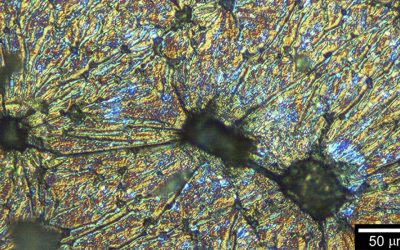 A new special issue of Macromolecular Rapid Communications highlights exciting recent developments in Macromolecular Engineering and is guest-edited by Jean-François Lutz (Institut Charles Sadron), Krzysztof Matyjaszewski (Carnegie Mellon University), and Brent Sumerlin (University of Florida).
A new special issue of Macromolecular Rapid Communications highlights exciting recent developments in Macromolecular Engineering and is guest-edited by Jean-François Lutz (Institut Charles Sadron), Krzysztof Matyjaszewski (Carnegie Mellon University), and Brent Sumerlin (University of Florida).
Many of the reports in this issue describe versatile new synthetic routes that lead to excellent control of molecular weight, chain architecture, and functionality. Others describe simplified or more efficient routes to controlled-sequence or complex topologies that once required tedious syntheses. The diversity of the methods and materials reported here is a testament to the rapidly evolving nature of synthetic polymer chemistry. Considering that the development of many new advanced materials may rely on novel macromolecules of significant complexity or specific functionality, there is no doubt that macromolecular engineering must continue its evolution to keep pace with the needs of our rapidly growing society.
Read selected articles now for free – for a limited time!
 Jean-François Lutz, Krzysztof Matyjaszewski and Brent Sumerlin: The guest editors of this Special Issue provide a general discussion of Macromolecular Engineering.
Jean-François Lutz, Krzysztof Matyjaszewski and Brent Sumerlin: The guest editors of this Special Issue provide a general discussion of Macromolecular Engineering.
Christopher W. Bielawski et al.: Researchers from UT Austin found a powerful route to synthesize donor-acceptor block copolymers via a simple sequential monomer addition approach (this research was also highlighted in a separate MaterialsViews article)
Krzysztof Matyjaszewski et al.: Atomic force microscopy was used to image and characterize the gradient composition in single molecular bottlebrushes (also separately featured on MaterialsViews)
Klaus Müllen et al.: Positioning of polar and non-polar patches on the periphery of semi-rigid polyphenylene dendrimers leads to remarkable solubility in solvents of different polarity such as toluene, methanol and water.
Please click the links for information on the related books “Macromolecular Engineering: Precise Synthesis, Materials Properties, Applications” edited by Krzysztof Matyjaszewski, Yves Gnanou and Ludwik Leibler and “Controlled and Living Polymerizations: From Mechanisms to Applications” edited by Krzysztof Matyjaszewski and Axel H. E. Müller.

















